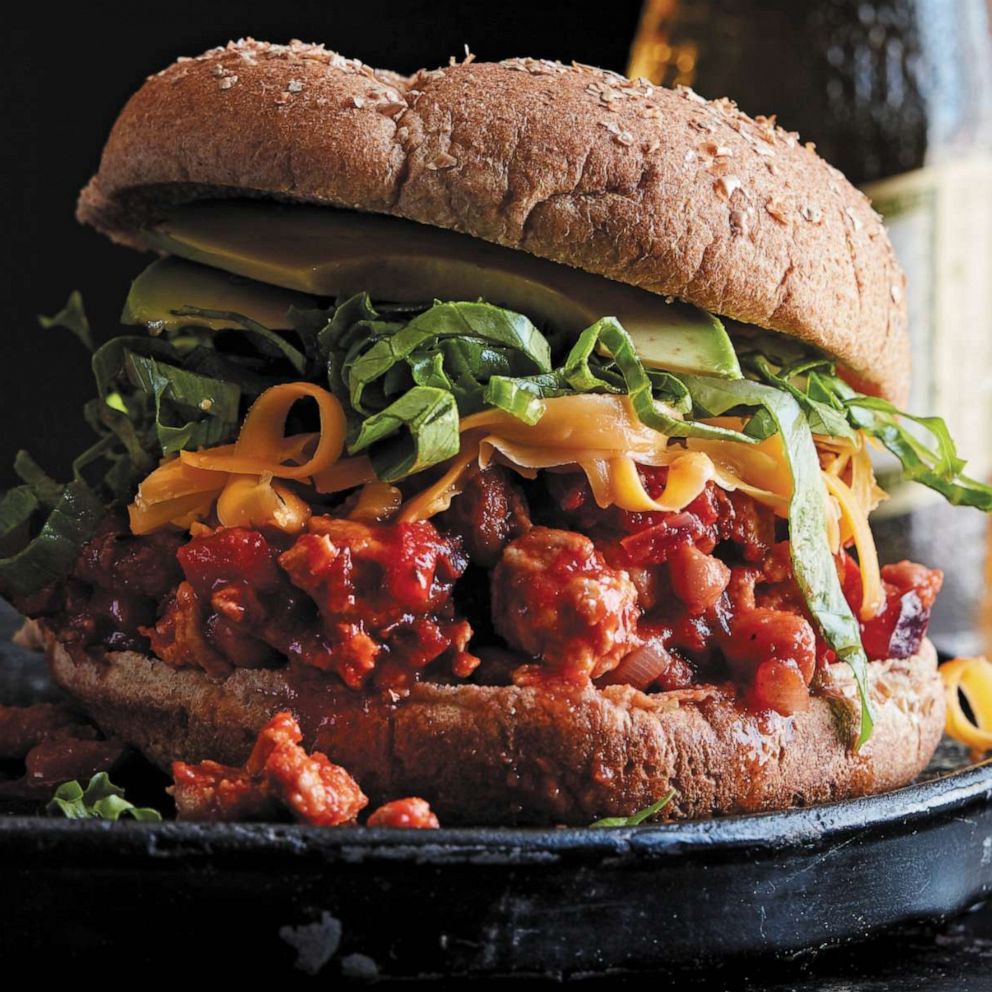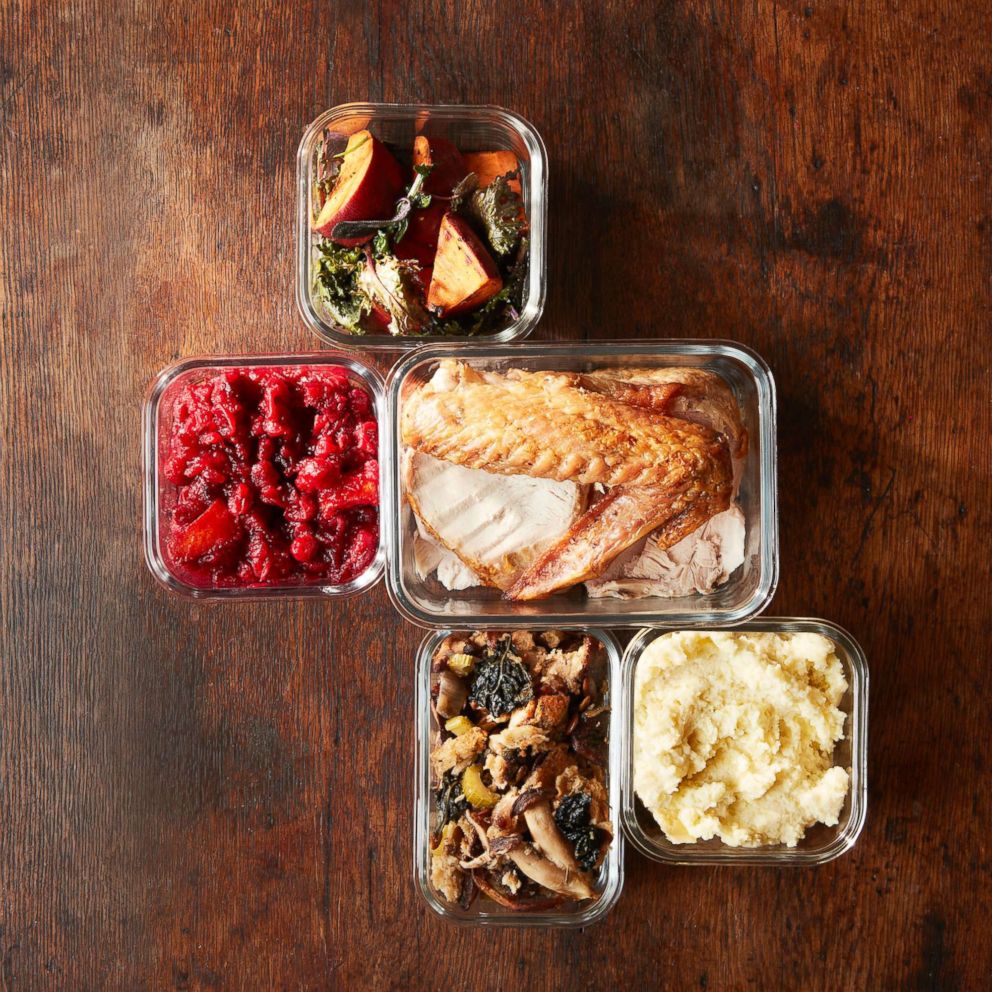Chef James Elliot teaches Ginger Zee how to make pumpkin, sausage and sage pizza
Amp up your cooking game with these easy eats and recipes you can whip up in 30 minutes or less.
Chef James Elliot shows us how to make pumpkin, sausage and sage pizza live on Instagram with Ginger Zee.
Ingredients
1 ball of Neapolitan pizza dough (recipe below or buy from store)
Parmesan, for grating
1 tablespoon good-quality olive oil
80 grams (3 ounces) fior di latte mozzarella, torn or sliced
60 grams (2 ounces) roasted fennel sausage, cut into bite-sized pieces
4-5 sage leaves, sliced
Fresh chili, to taste
Chili oil, to serve
Pumpkin Mixture
Makes enough for 4 pizzas
40 grams (1½ ounces) butter
50 millilitres (scant ¼ cup) good-quality olive oil
2 garlic cloves, finely diced
500 grams (1 pound, 2 ounces) diced pumpkin (prepared weight)
Salt and freshly ground black pepper
Directions
1. For the pumpkin, heat the butter, oil and garlic in a large saucepan until the garlic is golden brown. Tip in the pumpkin and cook, stirring occasionally, on a medium heat until soft. Add salt and pepper to taste, then take off the heat and leave to cool.
2. Preheat the grill (broiler) to its absolute highest setting, and place a large, ovenproof frying pan (skillet) over a high heat and let it get screaming hot.
3. Meanwhile, flatten and stretch the dough ball to make a 10-inch pizza base.
4. Lay the pizza base flat in the hot, dry frying pan, then spread with 80 grams (3 ounces) of the pumpkin mixture. Grate over some Parmesan and drizzle with the olive oil, then top with the mozzarella, sausage, sage leaves and fresh chili.
5. Once the base of the pizza has browned, about 1-2 minutes, place the frying pan under the grill on the highest shelf.
6. Once the crust has taken on some color, about 1-2 minutes, drizzle with chili oil

Neapolitan pizza dough instructions
Tip: Weigh out all your ingredients before you start.
Ingredients
1,000 grams (35 ounces) "00" flour (we recommend Caputo "blue")
2 grams (⅔ teaspoon) fresh yeast
620 millilitres (21 fluid ounces) tepid water
30 grams (1 ounce) fine sea salt
Directions
1. Make a mountain of flour in the middle of the table. Using your fist, make a deep well in the middle of the flour, exposing the surface of the table (turning your mountain into a moon crater).
2. Crumble the yeast into the tepid water. Use your good hand to mash up the yeast in the water until it has dissolved. (Keep the other hand dry for taking Instagram photos to show off to your friends.) Fill your crater of flour with a third of the yeast-water mix. Using your fingertips, start making very small circular motions to combine the flour and water.
3. Start dragging in some more flour to the mix, by "undercutting" the walls of the crater with your fingertips. As you do this the mixture, the middle will become thicker. Once it reaches the consistency of porridge, you need to add a bit more water. Don’t let it get too thick; if it starts to form a dough too soon, it becomes difficult to incorporate the rest of the water. Keep dragging in a little flour to thicken the mix, then pouring a little bit more water in to loosen it, until you have all the water used up.
4. Sprinkle the sea salt over the mixture while it’s still very wet to ensure it dissolves and disperses evenly throughout the dough. Now use both hands to push the remaining flour from the outside into the middle. Fold and press the mix until all the flour is absorbed and a dough comes together. If you have a dough scraper it really helps get everything off the table, but you can improvise with a paint scraper, spatula or knife.
5. Work the gluten by kneading the dough. Use the heel of your hand to stretch out the dough and roll it back up, while the other hand acts like an anchor. You’ll be able to see the strands of gluten stretching, breaking, being put back together and becoming stronger. Continue this for about 8 minutes until the dough becomes smooth and glossy. It should also feel tighter and elastic.
6. Let the dough have a 10-minute rest to relax the gluten. Cover the dough with a damp cloth or some clingfilm (plastic wrap) to keep the air from drying it out. Then divide your bulk of dough into individual portions. We recommend 230 grams (8 ounces) dough balls for 10-inch pizzas. Ensure your dough balls are neatly shaped -- pinched at the bottom and tight on the top -- then place them in a tray or container 3 centimetres (1 inch) apart. Cover with a tight lid or clingfilm (plastic wrap).
7. Now you can relax. The yeast will take over from here. Leave the dough at room temperature for approximately 6 hours until it expands to almost double its size, then store in the fridge overnight. The next day remove the dough from the fridge for 1-2 hours and bring it back to room temperature before making your pizzas.
Recipes excerpted with permission from "PIZZA: Pizza: recipes, stories, history, places, people, love" by Thom Elliot and James Elliot, published by Hardie Grant Books, November 2020, RRP $29.99 Hardcover.







